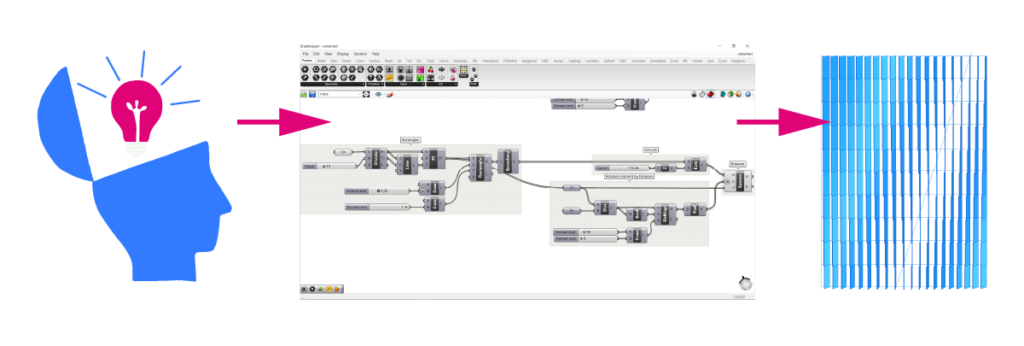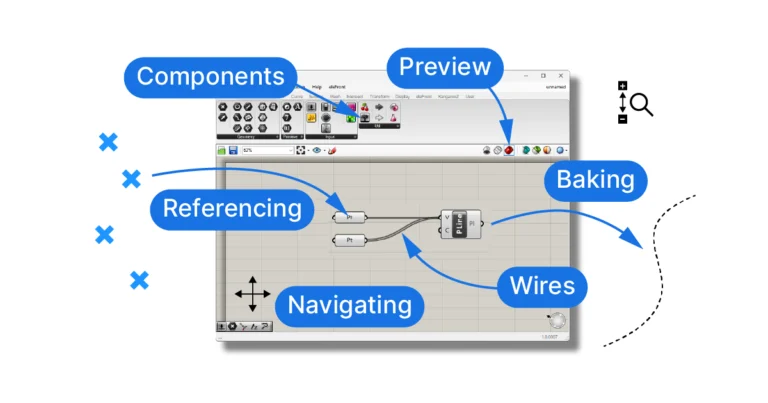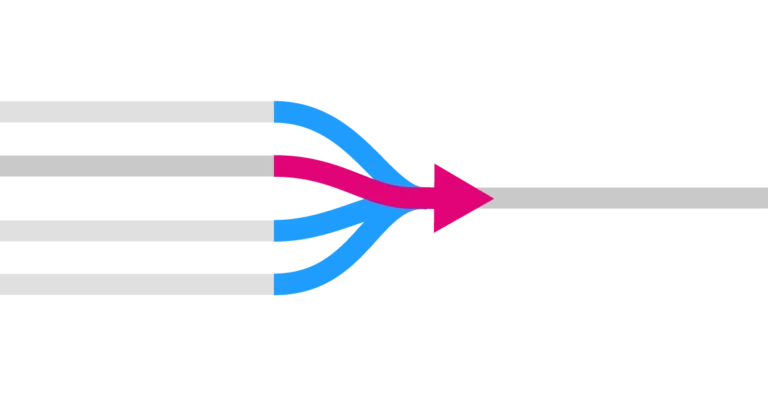
The parametric design process is a method of creating precise, highly-customizable parametric command sequences that result in designs that can be easily adapted to changing conditions. The parametric design method is becoming increasingly popular among architects and designers, as it allows them to create innovative, efficient designs that are tailored to specific needs.
In this blog post we’ll explore the key concepts of parametric design using Grasshopper for Rhino, a widely used parametric design tool among architects, and explain how it can be used to create designs that are highly responsive to changing conditions. This post is for architects, designers, and anyone interested in learning more about parametric design and the possibilities it opens up for the future of architecture and design. We will cover the design process step-by-step and provide tips for developing the skill of thinking in algorithms. Let’s get started!
What is parametric design using Grasshopper?
Parametric design using Grasshopper is a method of creating precise, highly-customizable designs that can be easily adapted to changing conditions. It uses algorithms and computational tools to create designs that are tailored to specific needs. In Grasshopper, this process is made more accessible and user-friendly through the use of visual programming, which allows designers to create complex designs using a simple drag-and-drop interface.
The key concepts of parametric design using Grasshopper include understanding the underlying logic of a design and breaking it down into a series of small, manageable steps. It also includes using specific components in Grasshopper to recreate the logic and managing the data flow along the way. It requires a strong understanding of programming concepts and the ability to think critically and solve problems.
The parametric design process using Grasshopper
Creating a parametric model involves a specific process. In this section we will delve into the step-by-step process of going from ideation to a parametric model in Grasshopper. Each step in this process is crucial in order to create a design that is precise, highly-customizable, and responsive to changing conditions. This section will be essential for architects, designers and anyone interested in learning more about parametric design using Grasshopper. While the final outcome is a Grasshopper script or so called Grasshopper definition, the process to get there involves the following steps:
The 5-step design process
- Defining design goals and parameters: The first step in the parametric design process using Grasshopper is to define the design goals and parameters. This involves identifying what the final output should look like, and what specific requirements the design must meet. It’s important to be as specific as possible, a parametric model is highly logical, and a vague goal can’t be translated into a logic.
- Figuring out the logic of the design: After the design goals and parameters have been defined, the next step is to figure out the logic of the design. This involves breaking down the final result into a series of geometric steps and identifying the key operations that will result in the desired output. At this stage we want to know the key geometric operations we’ll need to run to get to our target outcome.
- Breaking down the final result into geometric steps: This step is about taking design logic and breaking it down into a series of smaller geometric and logical steps. This step is challenging because it requires understanding the design’s logic and visualizing the intermediate steps.
- Applying programming concepts and managing data flow: Once the logic of the design is established, the next step is to open Grasshopper and start breaking it down into component sequences. This is where as a designer you will apply the programming concepts, use specific components and manage the data flow to recreate the logic established in the previous steps.
- Debugging your script: No script is perfect. Along the way you are going to run into issues and get error messages. It’s paramount to understand what the error messages mean and how they can be solved. With time debugging will get easier and easier, as you know what can go wrong and how to fix it.
How to Develop Algorithm Thinking
There is one fundamental skill needed to become proficient in parametric design using Grasshopper: the ability to think in algorithms. Understanding the underlying logic of a design and breaking it down into a series of small, manageable steps is crucial to creating efficient and innovative designs. To develop this skill, we will explore different approaches. These methods will help to clarify the design logic and make the process of creating a design using Grasshopper more manageable. If you are someone interested in learning more about parametric design, this section will provide valuable insights into how to develop your algorithm thinking.
4 Ways to practice thinking in algorithms
- Putting it into words: As simple as this may sounds, one way to develop algorithm thinking is to describe the desired output in words. By articulating the image in your mind, it helps to make sense of it and break down the final image into a sequence of descriptive steps. Its also useful to communicating the design to others and getting seeing if they can imagine what you have in mind. If they have any questions, use them to refine and concretize your idea.
- Sketching out the core geometric operations: Another way to develop algorithm thinking is to sketch out the core geometric operations that will lead to the geometry we have in mind. It helps to be as specific as possible and to consider as many geometric factors as possible, such as starting point, number of objects, heights, orientations and extrusion direction.
- Thinking backwards: Sometimes, it makes sense to think backwards from the final result and ask the question: what do we need as a basis for the last operation? By repeating this question, the design can be reverse-engineered.
- Describing object selection in a relative way: In Grasshopper, it’s important to describe object selection in a relative way, such as the second item in a list, or the surface facing up, the longest of a set of curves, or the object closest to a point. This ensures that the script will work for any similar input and even multiple inputs at once, making the design more flexible. Think of ways of describing certain operations in relative terms. It will make your scripts much more flexible and re-usable.
Final thoughts
In conclusion, parametric design using Grasshopper is a powerful method for creating precise, highly-customizable designs that can be easily adapted to changing conditions. From defining design goals and parameters, to figuring out the logic of the design, the parametric design process requires a strong understanding of programming concepts, as well as the ability to think critically and solve problems.
But most importantly, it’s about understanding and creating algorithms. With the right mindset and the right tools, parametric design using Grasshopper can open up a world of possibilities for architects and designers looking to create innovative, efficient designs that are tailored to specific needs.
So, let’s start breaking down those designs, getting our hands dirty with Grasshopper, and start creating the future of architecture and design!





